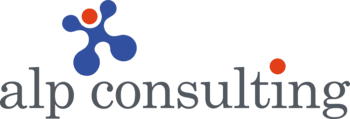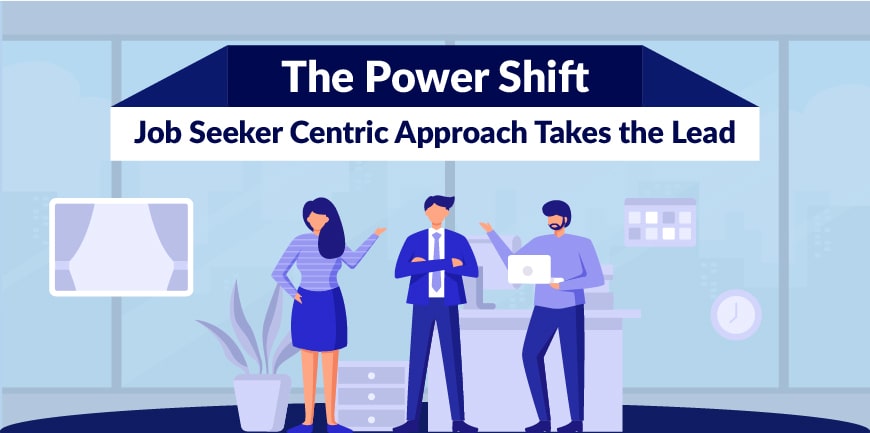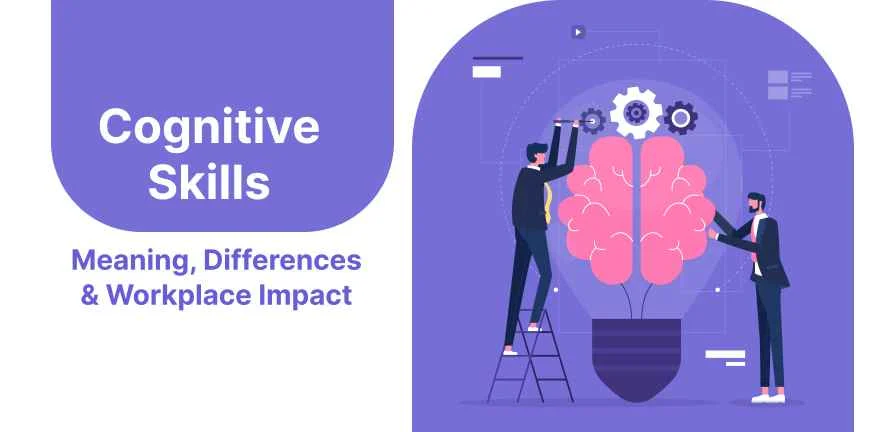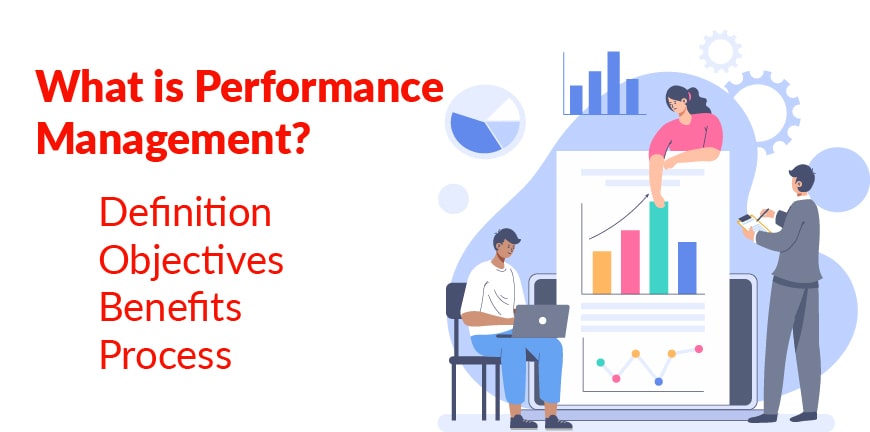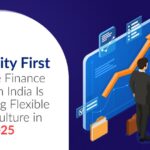
Flexibility First: How the Finance Sector in India Is Embracing Flexible Work Culture in 2025
27/05/2025
What is Cloud Compliance? A Comprehensive Guide
27/05/2025From time immemorial, employers have the upper hand and the authority to take charge of things and situations. They have set their terms, carved paths, decided salaries. But now their position seems to have rattled a bit as the balance of power has shifted.
There is a new wave engulfing the job market today by no one else but the job seekers who are modifying the rules of the game by manoeuvring conversations, reforming recruitment processes and enhancing workplace expectations.
They are boldly challenging the old-world recruitment norms of retention. This is more than just a trend, it is a shift propelled by digital evolution, demographic alterations and transforming cultural values. Get ready for an enigmatic Job seeker centric revolution ahead!
In Q1 2025, 43% of U.S. job seekers felt optimistic about finding quality jobs, up from 28% in Q4 2024.
1. Changing Labor Market Dynamics
The global labour market is profoundly getting effected by macroeconomic factors like advanced technologies demographic shifts, the rise of remote and flexible work models, etc. The traditional employment rules are overridden, and new rules are being formulated challenging employers to reevaluate how they would recruit, engage and retain employees.
There is a rise in demand for skilled professionals more than ever before. Comprehending the changing dynamics has become significant for creating resilient, future-prepped organizations. Let us dive into some of the factors:
2. Talent Shortages
Industries are facing challenges and struggling with talent shortcomings across the globe, especially in sectors like technology, healthcare, and engineering. As digital transformation is at its peak, demand for specialized skills has heightened and overpowered the available supply.
The rapidly growing talent shortage has fundamentally led to a shift in the employer-employee dynamic. Companies can no longer dictate terms and must aggressively reimagine strategies to retain top talent.
3. Flexible Work Modes
The COVID-19 pandemic drove the overwhelming adoption of remote and hybrid work models. These modules once considered mere benefit became a necessity and a myth that productivity gets hampered without physical presence got broken.
Businesses across sectors have now understood and realized that by implementing right methods and utilizing the right tools accompanied by clear communication, and trust in employees, operations can continue smoothly. The workforce today focuses on work life balance and autonomy seeking the liberty to choose when where and how they work.
76% of professionals prioritize flexible work options.
4. Generational Shifts
The workforce today is dominated by Millennials and Gen Z’s. Together, they are reshaping the values, culture, and expectations of a workplace. Unlike older generations who often gave priority to job security, long-term tenure, and financial compensation to build a successful career, today’s young workers focus on purpose, authenticity, and all-inclusive well-being.
94% of Gen Z and 92% of millennials value purpose at work.
5. Technological Advancement
Technology has been a key factor in transforming the job search landscape by giving unparallel control to job seekers. They do not have to be dependent on company websites or word of mouth to search for good opportunities and gain knowledge about employers.
The advent of digital tools like AI-powered job platforms to crowdfunded employer review has transformed how individuals identify, assess, and strive to get employed effectively.
thirty-one% of job seekers use AI tools in their job search, with higher adoption in IT (50%) and finance (47%) sectors.
Key Principles of the Job Seeker–Centric Approach
1. Core Candidate Experience
In today’s talent scenario, candidates seek respect and acknowledgement while they are getting recruited and the process itself reflects the brand culture and values. A transparent, smooth recruitment journey enables a candidate to perceive a company and its credentials.
88% of candidates say employer branding influences their decision to apply.
75% of job seekers research a company’s reputation before applying.
2. Personalized Career Paths
The new age workforce is not working for just a paycheck. It demands more, it aspires growth and self-development. Organizations are working towards building customized learning modules, mentorship programs, and upskilling scopes catering to employee growth and engagement.
3. Alignment of Values
Employers are highlighting their values, DEI (Diversity, Equity, Inclusion) initiatives, and social impact commitments exponentially. Job seekers are today weighing options in terms of assessing potential employers not just based on compensation packages but, but on how culturally compatible they are and where they stand ethically.
4. Work-Life Balance
Flexibility in work is something that all young job seekers are looking for. They want to fit work into their lives and not the other way round anymore. This is making companies rethink their strategies. They are working on offering flexible schedules, resources for mental health and family support systems to attract and retain top talent.
How are Employers Transforming?
Organizations with a dynamic approach are embracing this change by.
- Refurbishing Employer Branding: Companies are narrating compelling stories highlighting employee experiences, purpose-driven goals, and transparent leadership.
- Reimagining Job Roles: Firms are adopting skills-based hiring and designing job descriptions around the potentials and preferences of candidates.
- Investing in Technology: Companies are adopting AI-powered recruitment platforms, employee engagement tools, and feedback systems enabling a swifter and personalized interactions.
- Building Agile Work Modules: Hybrid and remote centric models are gaining momentum and organizations are integrating it in their systems and policies respecting employee autonomy and choice.
Potential Challenges
The job seeker–centric approach is a forward-thinking method that aligns with the moder workforce, however. it also presents certain challenges that cannot be overlooked:
1. Consistency vs. Customization
In today’s transformative workplace, one of the most significant challenges for HR leaders is facing is to strike the right balance between personalized employee experiences and standardized HR processes.
Employees are expecting experience designed to their requirements like flexible work systems, individualized career development programs and pay packages aligning with their life phases and values.
But standard and uniform HR procedures provide consistency in areas like compensation, performance assessment, onboarding, and grievance management driving reduced bias, legal adherence, and maintain organizational coherence.
Striking the right balance by organizations is creating structures that are organized yet flexible offering leeway for customization within clear boundaries.
2. Cultural Solidarity in Hybrid Setups
There is a surge in organizations embracing remote and hybrid work systems. It is becoming a challenge to maintain and sustain a coherent yet vibrant work culture. Culture was earlier integrated organically through informal individual communication. shared physical collaboration, in-person rituals.
Now dynamics have shifted and there is a requirement of designing innovative strategies to flourish across digital platforms and diverse scattered teams. Regular communications reinforcing values, objectives, and recognition across channels by leaders are essential.
Organizations can conduct virtual celebrations, cultural events and team building exercises. They can equip managers with tools to train and boost team morale. Adopting technologies is a must to support and promote collaboration.
3. Entitlement Culture
A job seeker–driven labour market where empowerment level is extreme can lead to unreasonable expectations from candidates and employees creating a dampened employer-employee relationship and complicate workforce management. There is a sense of lofty expectations amongst job seekers when they step into the workforce.
They want immediate results in terms of career advancements, high compensation packages, instant flexibility measures and more. These aspirations are not always feasible for some organizations and job roles.
The dynamic when left unnoticed might create misunderstandings and alignment problems between what candidates’ expectations and what employers can deliver. This is where the need of clarity in communication and mutual accountability comes into play.
Organizations must be transparent in communicating their expectations from the outset. Equally essential is crafting a culture of reciprocation. Like employers’ employees must also be committed towards taking initiatives, exhibit resilience, and perform consistently. Establishing realistic expectations for both parties foster trust nurtures trust, diminishes friction deviating from disengagement or early turnover.
4. Going Forward
The job seeker driven model will continue to rule as mobility across the globe accelerates and digital platforms advances to access greater opportunities, employees will continue to be assertive on influencing the structure and delivery of work.
Sustaining and flourishing in this new realm means companies must transition from traditional and transactional relationships to viewing and treating employees as partners in designing an innovative workplace.
Employers who adapt innovate and empathise have greater chances of drawing top talent, building resilient and future-ready teams. The future leaders of tomorrow are companies recognizing and embracing the human centric future of work now. It is Now or Never!
Contact Us For Business Enquiry

Rajkumar Shanmugam
Rajkumar Shanmugam is the Head of HR at ALP Consulting, bringing over 19 years of comprehensive HR leadership experience across India and international markets. His expertise spans talent acquisition, employee relations, performance management, compliance, and HR transformation. Rajkumar has a proven track record of driving people-centric initiatives, enhancing workplace culture, and aligning HR strategy with business goals. With extensive experience in US staffing operations and global mobility, he continues to lead organizational excellence through innovation and employee engagement.
